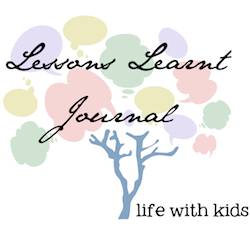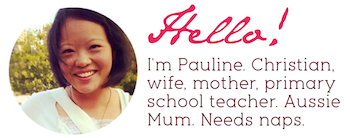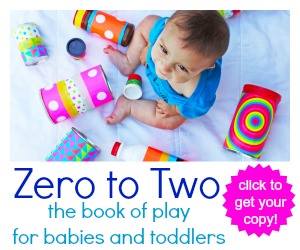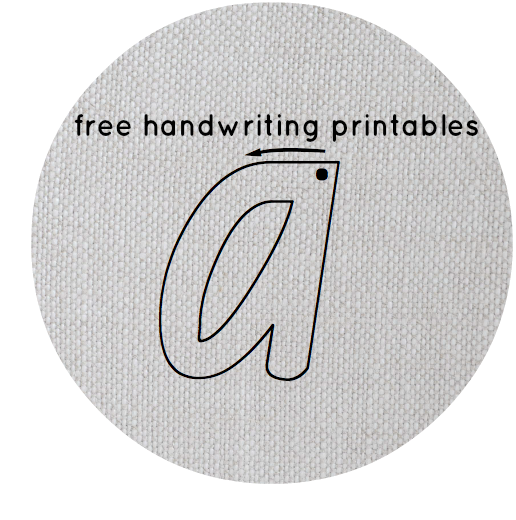
We’re fast approaching the first school holidays of the year. About 10 weeks ago, Mr N and M headed off enthusiastically to school, into their Kindergarten class. I also headed back to the world of teaching, and oddly enough – also to a Kindergarten class. So much happens in Kindergarten, but in my mind, reading, and learning to read is a huge part of Kindergarten.
How To Support Your Child’s Reading At Home
Before I delve into some specific activities that you can do at home to complement your child’s reading lessons at school, I want to make it clear that above all, reading with your child at home should be enjoyable. I know first hand how hard it is to juggle everything into the tiny space of time between getting home and children’s bedtimes – and on fading energy levels.
The best thing you can do to support your child’s reading at home is to listen to your child read every day, even for a short time.

I also personally think the 10 ways to encourage reading that I previously shared takes precedence over these possible specific activities you can do with your Kindergarten child at home. Growing a love of reading and of literature is priceless.
Having said all that, I have lately incorporated these short little activities at home with my Twin 5’s as part of our reading time at home. We only do these activities when we have a bit more time and energy up our sleeves.
I think these short reading activities can help consolidate certain reading skills taught in Kindergarten, and hence am glad to be sharing them here with you.
Activity #1: An Unknown Word in the Text
Using the text that the child has just read, choose one unknown word for them to look for, locate and construct.
For example, if the your child didn’t know the word “the”, ask him/her to find “the” on a given page. Have them re-read the sentence, stop at the word “the” and point to it.
We have a tub of magnetic letters at home and some small magnetic whiteboards. Such useful resources and certainly worth investing in. However, if you don’t have these, you can easily make up some small cardboard squares with letters on them and use these instead.
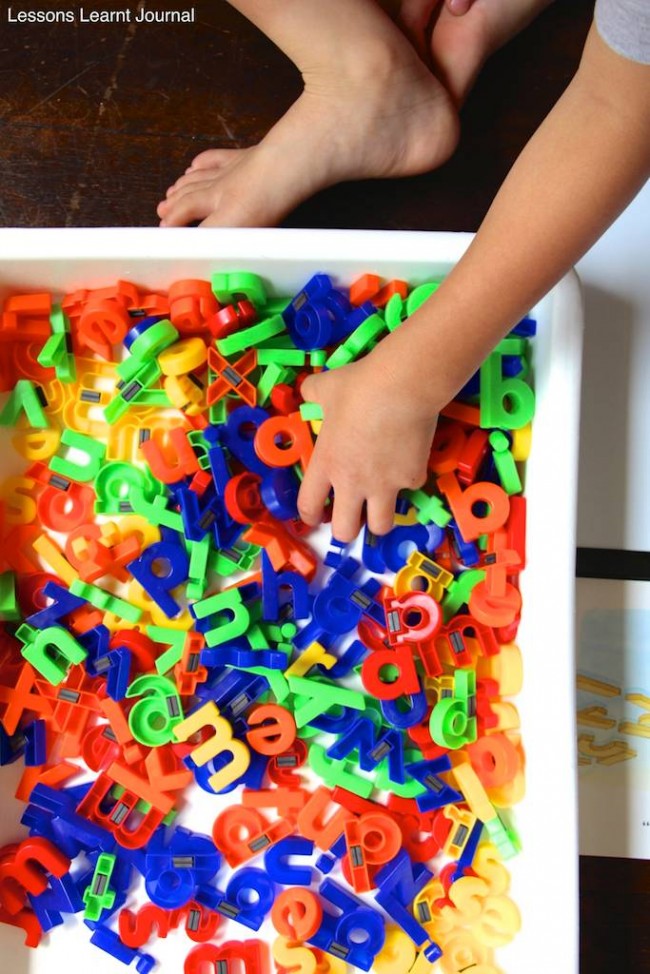
Give your child the letters that make up the unknown word. For e.g. for “the”, give them the letters “t”, “h”, “e”. Don’t give it to them in any particular order or the right way up necessarily. Ask them, using these letters, to make the word “the”. Check that they’ve:
- Placed the letters in the right sequence – e.g. t first, h next, and e last.
- Put the word together in the right direction – from left to right.
- Orientated the letters correctly – e.g. the letters t or h or e aren’t placed upside down.
After they have constructed the unknown word, have them write the word, checking that they’ve:
- Written the letters in the right sequence – e.g. t first, h next, and e last.
- Written the word together in the right direction – from left to right.
- Orientated the letters correctly – e.g. the letters t or h or e aren’t upside down.
- Used the correct letter formations – e.g. for the letter t, we go down, take our pencils off, then draw a line across from left to right ; we don’t go up, pencils off, then draw a line across right to left.
Activity #2: A Known Word in the Text
Using the text that the child has just read, choose a known word.
For example, with Mr N, our known word was “pig”. I asked him to re-read the sentence and stop at the word “pig”.
I asked him to make the word “pig” using our magnetic letters. We then talked about what we would need to change in “pig” to make the word “big”. We discussed how the beginning sound/letter would need to change. I then asked if he could make the word “big” and place it next to “pig” so it would read “big pig”.

He then wrote the words “big pig” and drew a picture of a big pig. As with the unknown word activity, check that they’ve:
- Written the letters in the right sequence.
- Written the word together in the right direction.
- Orientated the letters correctly.
- Used the correct letter formations.
With this unknown word activity, you’re not necessarily going to get words that go well next to each other like “big pig”. Your two words may be “can” and “fan”. In which case, you would just have one word on the board at any given time. E.g. change the word “can” to “fan”. You can then ask them to draw a fan.
Activity #3: New Letter Combinations
As Mr N could do the above quite confidently, I then challenged him to make the word “small”, so it would be “small pig” instead of “big pig”. He proceeded to make the word “small”, spelling it “smol”, which makes perfect sense phonetically. I praised his attempt, then introduced the new letter combination “all” to him. We talked about some words with the letter combination “all”, like “fall”, “call”, “tall”, “ball” and “small”.
He made the word “small”, using the “all” letter combination, then wrote the words, “small pig”, and finish it off with a picture of a small pig.
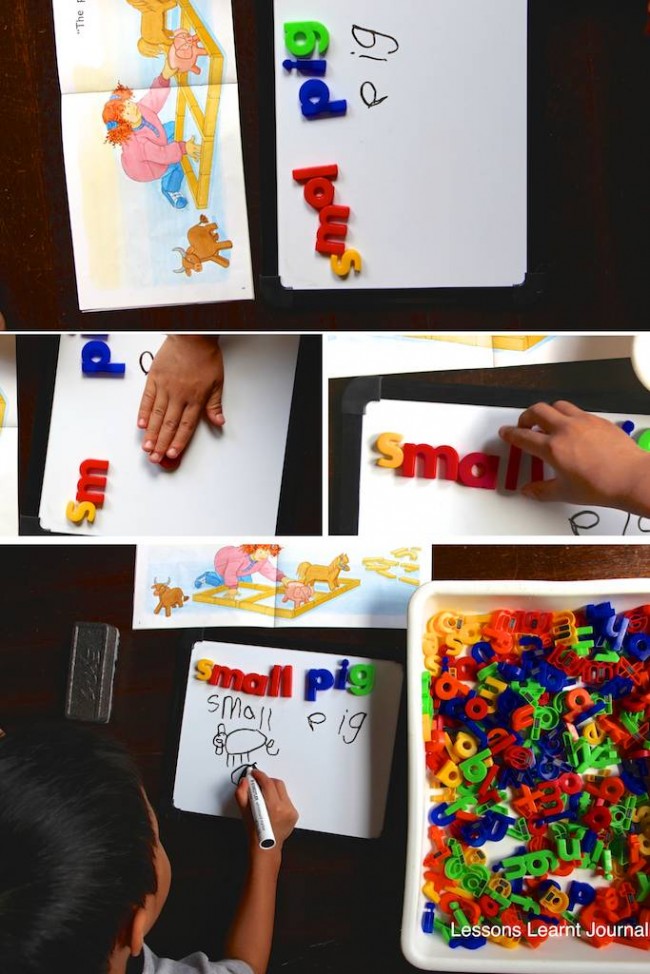
Encouraging Children to be Independent and Autonomous Learners
The pace at which children learn is incredible. Even during those times when it seems like they aren’t quite grasping new concepts at a pace you’d expect or like them to, be confident that they will learn how to read – (perhaps to a different time frame to your expectations though).
While the above reading word activities for kindergarten can be helpful, to encourage children to be independent and autonomous learners, ensure that they have plenty of opportunities to read books that they are familiar with. Books that they can read easily, accurately and fluently without support. Give them access to a rich and varied range of reading material. Let them choose. Let them read. Give them time to read regularly during the week.
If you enjoyed this post, please consider leaving a comment; I’d love to hear from you. If you are new here, you might like to receive updates direct to your email. We have many fun ideas to share.

